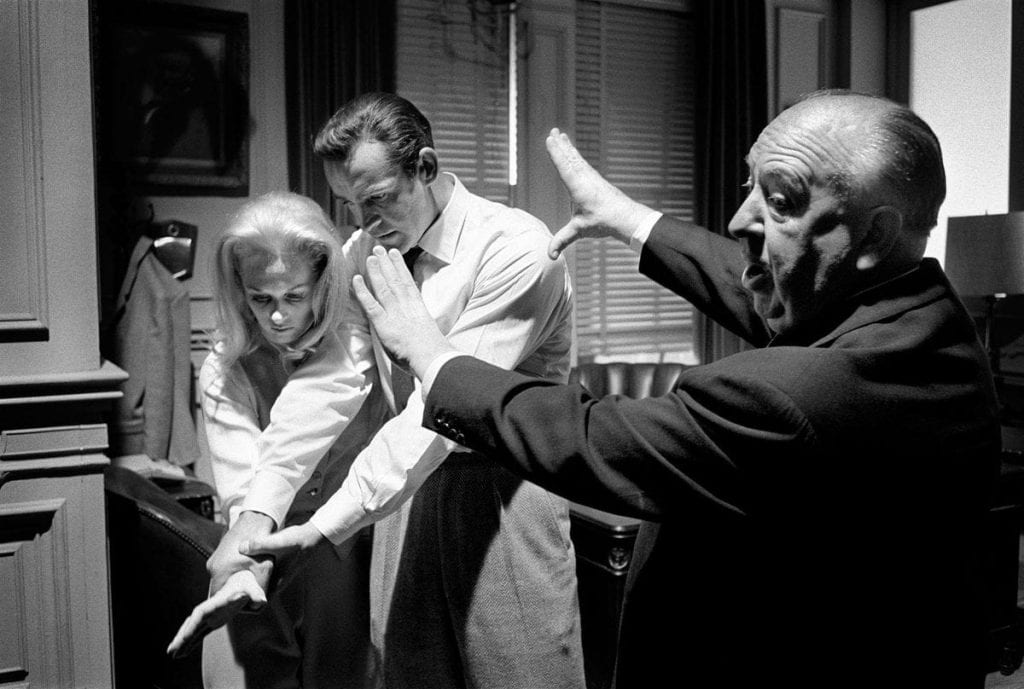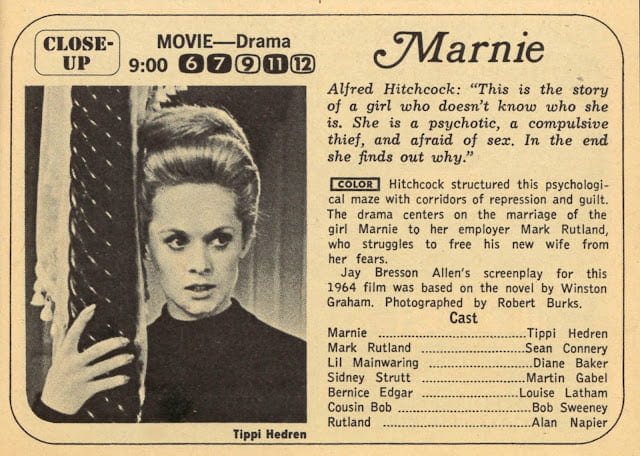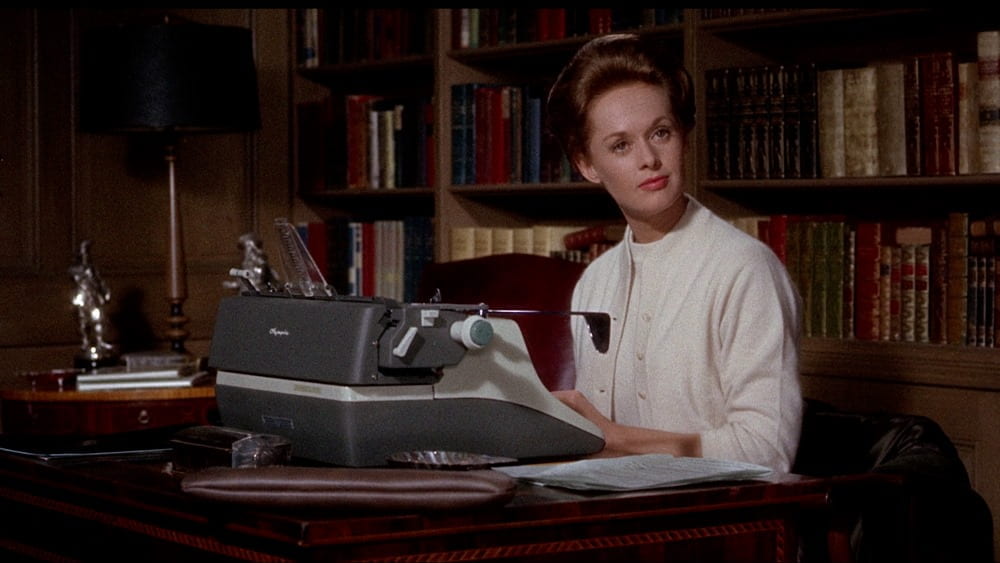
In Robin Wood’s 1988 article “The Skull Beneath the Skin: Some Indiscreet Charms of Narrativity,” the critic places some of the pantheon directors of cinema into categories of identification: “Buñuel was clearly one of the cinema’s great male-identified directors (the list would include Hawks, Godard and Scorsese), as against its great woman-identified directors (the list would include Mizoguchi, Ophuls and Bergman); Hitchcock straddles the two categories, which accounts for the fascination and complexity of Vertigo and Marnie.” Certainly, one can observe both strains of male and female subjectivity permeating Hitchcock’s many troubled (and troubling) films about couples. Though a deeply male sexual anxiety acts as a definitive throughline linking many of the director’s works, one may also discern an abiding empathy for women characters who often find themselves in precarious or disturbing narrative situations, a feminine (if not wholly feminist) aspect of the Hitchcock oeuvre.
Probably the central text in this Hitchcockian cinema of the feminine is the director’s first (somewhat compromised) American work, Rebecca (1940), an adaptation of Daphne du Maurier’s eponymous novel about a young woman who marries a much older man whom she hardly knows, only to find herself trapped in a labyrinth fortress which still appears to be marked by the spectre of the man’s former wife. A woman protagonist being paired with an unknowable and possibly sinister male partner is a motif one sees crop up again in subsequent Hitchcock films of the 1940s, specifically Suspicion (1941) and Spellbound (1945). In many ways, though, these earlier films have come to feel like a dry-run of sorts for the disturbing implications Hitchcock would go on to explore in his daring later experiments with Tippi Hedren, The Birds (1963) and above all Marnie (1964).

In Marnie, as in Rebecca, matrimony becomes characterized as a snare of entrapment: the traumatized kleptomaniac title heroine (Hedren) gets blackmailed into an awkward and painful marriage by a wealthy man (Sean Connery) who forces himself onto her during their honeymoon trip. The difference between Rebecca and Marnie is the difference between a literary cinema fueled by narrativity and a more formalist cinema fueled by images and objects: throughout the later film, Marnie’s fear of sex and her mysterious source of past trauma is “narrated” to us by Hitchcock primarily through bold, forceful images: frames of solid red appear to cover the screen whenever Hedren’s character is reminded of her childhood experiences; isolated details on physical objects (a combination lock on a safe full of money, a speck of crimson blood on a white sleeve) become imbued with resonance even if we, the audience, do not yet understand their crucial significance in terms of the plot.
Rebecca is a film with interiority, one might say: the central heroine’s trauma is relayed to the audience through the script and through the expressive nature of Joan Fontaine’s performance as a mousy young wife full of uncertainty about her position. Marnie, on the other hand, lacks this literary sense of interiority — it’s a film without a center, a shattered portrait. At this late stage in Hitchcock’s career, his filmmaking technique has become so powerful that he merely needs to show us an object or a face and we immediately understand it to be pregnant with latent meaning.

Marnie, even more than The Birds, Hitchcock’s previous outing with Hedren, was almost universally despised by mainstream critics on initial release. Even the Village Voice’s Andrew Sarris, the director’s staunchest auteurist defender in the United States, considered it an interesting failure. Today, it looks to me like Hitchcock’s richest and most marvelous film alongside Vertigo. Perhaps the disturbing feminine portraiture of Marnie simply did not fit squarely with the idea of Hitchcock that many critics had at the time; the dark side of obsessive male neurosis he had explored only a few years earlier in Psycho seems to treat some of the same themes of misogyny from an opposite perspective. But in all his works, Hitchcock’s empathy seems to lie with the victims and the oppressed, not with the monsters and the oppressors. Dave Kehr once said that Hitchcock’s cinema is a lifelong commitment. Given the dense complexity of meanings his films continue to produce, and the monumental ferocity of his spellbinding, full-bodied images, I would have to agree with that assessment.

IU Cinema has previously screened many Hitchcock films, including Rope, Strangers on a Train, Vertigo, and Blackmail with a new score by Neil Brand, as well as an entire series dedicated to the filmmaker and frequent collaborator Bernard Herrmann called Sound and Vision.

Jack Miller enjoys the films of Howard Hawks, Jacques Tourneur and John Ford. He graduated from Indiana University with a BA in English, and currently resides in Chicago. He also enjoys listening to country and disco music.